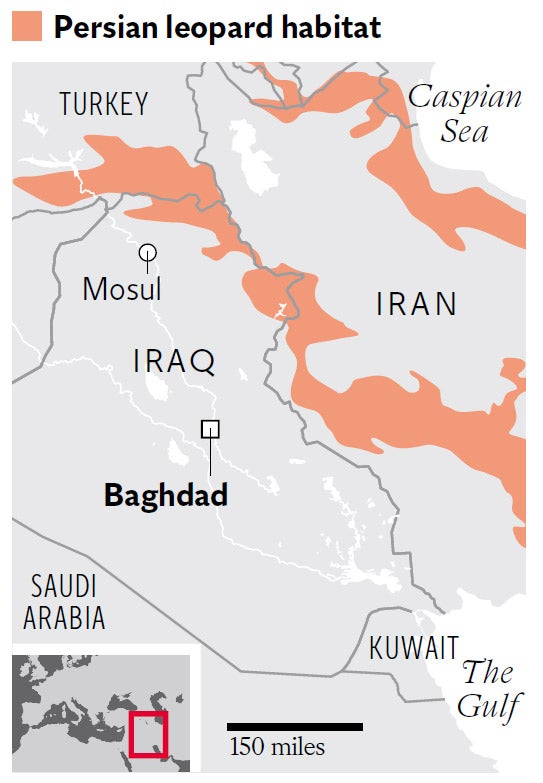Landmine sanctuary: rare leopard finds haven in the lethal legacy of Iran-Iraq war
The endangered Persian leopard is thriving thanks to landmines

Your support helps us to tell the story
From reproductive rights to climate change to Big Tech, The Independent is on the ground when the story is developing. Whether it's investigating the financials of Elon Musk's pro-Trump PAC or producing our latest documentary, 'The A Word', which shines a light on the American women fighting for reproductive rights, we know how important it is to parse out the facts from the messaging.
At such a critical moment in US history, we need reporters on the ground. Your donation allows us to keep sending journalists to speak to both sides of the story.
The Independent is trusted by Americans across the entire political spectrum. And unlike many other quality news outlets, we choose not to lock Americans out of our reporting and analysis with paywalls. We believe quality journalism should be available to everyone, paid for by those who can afford it.
Your support makes all the difference.For humans it probably ranks as one of the world’s most dangerous nature reserves, but the mine-strewn border between Iran and Iraq has become an unlikely sanctuary to one of the world’s most endangered species of leopard.
The legacy of the Iran-Iraq War in the 1980s has left an estimated 20 to 30 million deadly landmines in the border region, allowing the endangered Persian leopard to roam free from the threat of poachers.
The munitions continue to kill and maim residents along the 900-mile border, but in the mountainous Kurdistan region there are reports the Persian leopard, which rarely puts all its weight down on one paw, is too light to detonate the Soviet-era pressure-triggered landmines.
Conservation efforts in the region have floundered since the 1980s. However, the unofficial leopard sanctuaries along the border now mean that conservation charities in the area are in the unusual position of planning to oppose new plans to remove landmines.

“Environmentally speaking, mines are great because they keep people out,” Azzam Alwash, the head of Nature Iraq, told National Geographic magazine.
The natural habitat of the Persian leopard, which is often confused with the similar-looking snow leopard in Siberia, ranges from eastern Turkey to western Pakistan and includes vast tracts of the Caucasus and Russia. However, scientists now believe that fewer than 1,000 wild Persian leopards remain. Most of these are to be found in Iran on the border with Iraq, while the population elsewhere has almost entirely disappeared due to poaching and habitat destruction.
Today, the market for once-coveted leopard pelts has dried up, but hunting is a traditional and popular pastime in Iran and hunters still prize the rare animals.
Conservationists report that the danger of landmines acts as a far greater deterrent than law enforcement. The 80kg leopards still face risk from the munitions, however. Although they are too light to set off anti-tank mines or less advanced anti-personnel mines, two of the animals are known to have died after they set off more advanced Italian-made tripwire mines.
The animal is listed on the Red List of the International Union for Conservation of Nature and Natural Resources, with research showing that more than 70 were poisoned or illegally killed for their pelts from 2007 to 2011.
The minefields of the Iran-Iraq border are not the only conflict zone offering protection to wildlife; the demilitarised zone between North Korea and South Korea has long been known as a haven for wildlife, while in the Falkland Islands the penguin population has thrived, free from human interference, in several large minefields sown during the brief 1982 Argentinian occupation.
Join our commenting forum
Join thought-provoking conversations, follow other Independent readers and see their replies
Comments